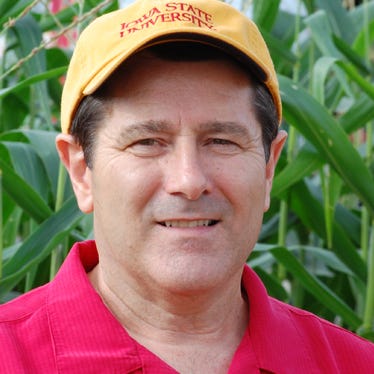September 12, 2017

The 2016-17 crop marketing year ended on Aug. 31 with U.S. ending stocks estimated at the largest levels in nearly 30 years for corn and soybean stocks at levels not seen in 10 years. The 2016 U.S. corn and soybean crops were record large as Iowa averaged 203 bushels per acre for corn and 60.5 bushels per acre for soybeans. Despite the less-than-ideal 2017 growing conditions, this year’s crops look closer to average statewide, and many old-crop bushels remain unpriced in storage.
Storing corn and soybeans without a crop marketing plan past mid-July has proven challenging once again. Most farmers ran out of cash trying to store 2016 crops, so they’ve already made their cash sales and are preparing for the 2017 harvest. Others took the risk with their extra 2016 bushels, thinking that a late-summer futures price rally would allow them to at least break even on bushels stored for nearly 10 months.
However, the selloff in futures prices in August combined with widening basis (local cash minus nearby futures) as harvest approaches provides limited opportunities for farmers with unpriced old-crop bushels. This is especially true with bushels stored commercially with wider-than-normal basis likely to persist before and during the 2017 harvest.
In addition, commercial storage and interest costs could approach 50 cents per bushel since the 2016 harvest. That amount will still need to be subtracted from bushels sold to determine the final cash price received. Thus, you can expect a likely negative return to storage for those extra 2016 bushels when they finally get marketed.
What to do with old-crop bushels
Very few cash sale strategies remain for old-crop bushels without adding additional storage costs or futures price risk. Even comingling old- and new-crop corn bushels on-farm could be risky, as quality issues have emerged with some of the 2016 crop. In addition, a crop insurance adjuster should measure grain bins containing old-crop bushels stored on-farm before adding new-crop bushels. Procrastination in contacting your crop insurance agent to request a grain bin measurement could delay the adjuster and your start to the 2017 harvest.
However, with the 2017 yield variability across Iowa — and perhaps a harvest that might begin later than normal — regional basis differences have emerged. Some processors have narrowed old-crop basis to ensure a flow of bushels out of farmers’ hands before harvest. Once harvest gets underway, you can expect that basis to widen for much of October barring weather delays. Think about checking various processor cash bids in your region, especially if you have a semitractor available to deliver those bushels.
New tool compares cash grain bids
ISU Extension and Outreach has developed an easy way to compare various cash grain bids while reflecting your transportation costs. The Grain Bid Comparison Tool, A3-41, can be found on the ISU Ag Decision Maker website.
Collect up to five cash grain bids from various locations and input these cash prices into the Excel spreadsheet, along with your own estimates of operating costs and distance to haul the grain. For new-crop corn bushels, adjustments should be made for higher moisture content to adjust for drying and shrink discounts. This decision tool allows for comparing a variety of what-if scenarios for selling grain at various cash prices while considering your own transportation costs.
Johnson is the Iowa State University Extension farm management specialist in central Iowa. Contact him at [email protected].
About the Author(s)
You May Also Like






